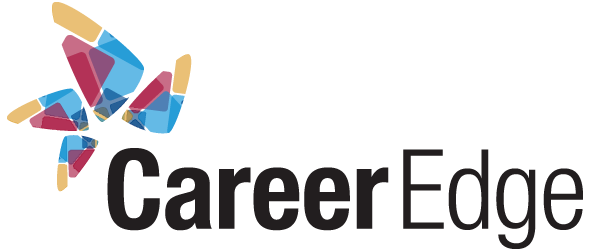
AI Is in the process of changing job hunt!
The job search process has always been dynamic, constantly evolving alongside shifts in technology and workplace culture. But in recent years, artificial intelligence (AI) has emerged as one of the most transformative forces in recruitment. From resume screening to interview scheduling and skills assessment, AI is reshaping the way candidates search for and secure jobs. While this revolution brings both opportunities and challenges, understanding how AI works in hiring can help candidates adapt and thrive in this new environment.
The Role of AI in Recruitment Today
AI in recruitment refers to the use of machine learning, natural language processing (NLP), and automation tools to streamline and enhance the hiring process. Many companies now rely on AI-driven tools to handle tasks such as:
-
Applicant Tracking Systems (ATS): These systems automatically scan resumes and rank candidates based on keywords, experience, and relevance to the job description.
-
Chatbots for Initial Interaction: AI-powered chatbots are often the first point of contact between a candidate and a company, providing information, answering questions, and even pre-screening applicants.
-
Video Interview Analysis: Some platforms use AI to analyze recorded interviews, assessing facial expressions, tone of voice, and speech patterns to evaluate soft skills and cultural fit.
-
Skill Assessment Tools: AI-based testing can evaluate coding, writing, problem-solving, or technical skills, helping recruiters make data-informed decisions.
-
Job Matching Algorithms: AI can match candidate profiles to suitable job openings, reducing search time and increasing the quality of matches.
While these tools enhance efficiency and scalability for recruiters, they also introduce new complexities for job seekers.
The Pros of AI in the Job Hunt
From the candidate’s perspective, AI offers several advantages:
-
Faster Job Matching: AI systems can scan thousands of job listings and identify the most relevant opportunities based on a candidate’s profile, skills, and preferences.
-
Bias Reduction (in Theory): When trained correctly, AI can help remove human bias from the screening process by focusing on skills and qualifications rather than age, gender, or ethnicity.
-
Streamlined Communication: Chatbots and automated scheduling tools speed up the process and eliminate long wait times between candidate touchpoints.
-
Feedback Loops: Some AI platforms offer personalized feedback or insights into why a candidate didn’t move forward — valuable data for self-improvement.
The Cons — and Why Candidates Need to Adapt
Despite these benefits, AI in hiring has some pitfalls, particularly for candidates unfamiliar with how these systems work:
-
Keyword Dependency: Resumes that don’t contain the right keywords may be rejected by ATS, even if the candidate is highly qualified.
-
One-Size-Fits-All Evaluation: AI tools may overlook unique qualifications or unconventional career paths if they don’t align with pre-programmed parameters.
-
Bias Can Still Exist: If an AI system is trained on biased historical data, it can perpetuate or even amplify discrimination.
-
Lack of Human Touch: Some candidates feel frustrated by the absence of personalized interaction during early recruitment stages.
In light of these challenges, candidates must take proactive steps to optimize their job search for an AI-driven hiring landscape.
How Candidates Can Adapt to AI-Driven Recruitment
1. Optimize Your Resume for ATS
The first line of defense is ensuring your resume is AI-friendly. Use clean, standard formatting (avoid tables, columns, or excessive graphics), and tailor your resume for each job application. Focus on incorporating relevant keywords from the job description — especially job titles, required skills, and certifications. Avoid using overly creative job titles or industry jargon that the AI might not recognize.
2. Focus on Skills and Outcomes
AI systems often prioritize measurable achievements and clear demonstrations of competency. Instead of listing duties, describe your accomplishments with quantifiable outcomes (e.g., “Increased sales by 25% in Q2 2024” or “Reduced processing time by 40% through automation”).
3. Build a Strong Digital Presence
AI doesn’t just analyze your resume — it may also scan your online presence. Keep your LinkedIn profile up to date, and make sure it aligns with the information on your resume. Use platforms like GitHub, Behance, or Medium to showcase your work if applicable. A strong online footprint increases your discoverability and builds credibility.
4. Practice for AI Interviews
Some companies use AI video interviews to assess candidates before a human recruiter gets involved. Practice answering questions in front of a camera, maintain good eye contact, and speak clearly. Tools like HireVue use facial recognition and vocal analysis, so your demeanor, tone, and pacing matter as much as your content.
5. Understand How Matching Algorithms Work
When using job boards or platforms like LinkedIn, the algorithm suggests jobs based on your profile and behavior. Help it help you: set clear preferences, list specific skills, and engage regularly by applying, posting, or networking. The more data you provide, the better your matches will be.
6. Don’t Neglect the Human Element
AI may screen you in — but a human will usually make the final decision. Cultivating soft skills like communication, empathy, adaptability, and problem-solving remains essential. Whenever possible, try to network directly with recruiters or hiring managers. Personal referrals or a warm introduction can bypass AI barriers altogether.
7. Stay Up to Date With Tech Trends
Demonstrating tech savviness can set you apart. Stay current on how AI is being used in your industry, and be ready to discuss it in interviews. Showing that you understand — and are not intimidated by — AI tools can give you an edge, especially in tech-driven sectors.
The Future of Job Hunting in an AI World
AI in recruitment isn’t going away — it’s only becoming more sophisticated. As generative AI, predictive analytics, and skills-matching platforms advance, the line between technology and talent will continue to blur. Candidates who understand the tech, and tailor their approach accordingly, will be best positioned to succeed.
That said, human qualities — creativity, leadership, emotional intelligence, and the ability to adapt — are still irreplaceable. The future of job hunting isn’t just about competing with AI, but rather learning how to work with it to stand out.
AI is no longer a distant concept in recruitment — it’s here, actively shaping the way employers hire and how candidates land roles. While it presents some challenges, it also opens the door for greater access, efficiency, and transparency in the job market. For candidates, the key is to stay informed, adapt their approach, and blend technology with human touchpoints. Those who can navigate this new landscape skillfully will not only find jobs — they’ll find the right jobs.




